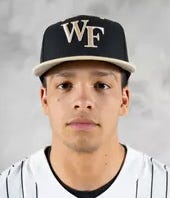2024 MLB Draft College Pitcher Preview
Advanced data analysis on 10 of the best MLB Draft Pitchers
For longer posts like this, I encourage you to read them on my substack website.
I’ll be on MLB Network’s broadcast for the 2024 MLB Draft alongside Melanie Newman and Carlos Collazo. My thoughts below were part of my prep process for each college pitcher projected to go in the first few rounds. They’ll inform what I’ll be saying during the draft on MLB Network’s broadcast.
I’m not going to run these pitchers through stuff models because I think it would be an inaccurate representation of their stuff when they reach MLB given the difference in baseballs between college and MLB. I’m also mildly uncertain how the altitude at various college stadiums would affect these shapes. I’ll add what I think the pitch grades would be in MLB based on my perception of how the shape and velocity might change with an MLB ball. It’s only somewhat tied to the numbers left of each grade. The scale for those ratings is as follows:
Below Average = 94 Stuff+ or 33rd percentile. Average = 100 Stuff+ or 50th percentile. Above-average = ~106 Stuff+ or 67th percentile. Plus = 112 Stuff+ or 85th percentile. Plus-plus = 124 Stuff+ or 98th percentile.
If you need a refresher on the movement numbers I mention below, check this video out. I’ve been told my extension numbers below are pretty low (about .3-.5’), but given I don’t have a way to fact-check it, you’ll see me mention extension with caution a few times.
Let’s get it going.
1A. Chase Burns, RHP, Wake Forest
Summary: Electric, high-release
Four-Seam: 98 mph | 19.5” iVB | 4” arm-side | 6.5’ release | 6.4’ ext | Plus
Slider: 87 mph | -1” iVB | 8” sweep | Plus
Curveball: 82 mph | -7” iVB | 8” sweep | Above Average
Changeup: 90 mph | 10” iVB | 14” arm-side | Above Average
Chase Burns is the most electric arm in this draft. Everything from a velocity perspective is above average by a couple of miles per hour. He cuts his fastball a bit, which results in less-than-average arm-side movement, but the vertical break on the pitch is still ~2” above average for his release height. If we want to critique, his fastball was an ineffective pitch versus left-handed hitters this season. It allowed a .710 SLG versus lefties and only missed bats on 23% of swings (22% is the MLB average). It was better versus righties, but it still got slugged over a .450 clip. I think the fastball performance could be a byproduct of him using aggressive targets and a centralized approach to the zone. I don’t think the present command is good enough to allow him to mix locations, but I also don’t think that’s too much of a concern given pitchers like Tyler Glasnow and Dylan Cease work with a similar shape at the top band of the zone and it works enough to succeed.



